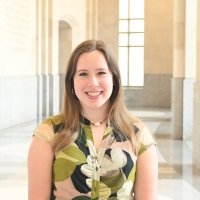
A blog of the Indo-Pacific Program
Seeking to address the country’s shortage of doctors, the South Korean government proposed a change intended to increase the number of medical practitioners nationwide. Then, thousands of doctors left their posts.
February 20, 2024, marked the beginning of a major walkout of junior doctors—A devastating blow to the South Korean healthcare system. The move protested the government’s announced plan to increase the annual medical school admission quota by 2,000 students for the next ten years. Now, eight months later, the medical community and the government remain in a long-term standoff with no resolution in sight.
...Korea’s community of medical students and junior doctors does not believe increasing the number of medical students will address the core challenges within the nation’s healthcare system.
The government’s proposed increase in medical school admissions was designed to address the perceived shortage of doctors, an alarming issue as South Korea’s population is aging rapidly. According to the Organization for Economic Cooperation and Development (OECD), South Korea has 2.6 doctors for every 1,000 people, among the lowest in the developed world.
However, Korea’s community of medical students and junior doctors does not believe increasing the number of medical students will address the core challenges within the nation’s healthcare system.[1] Those protesting the new policy argue that, first, there is an uneven distribution of doctors, both geographically and across expertise. Second, doctors in critical fields face poor working conditions, including long hours and uneven compensation. Junior doctors in Korea work 36-hour shifts, compared to 24-hour shifts in the United States. Third, Korean doctors face high litigation risks; one in three doctors have faced a malpractice case since 2019.
Moreover, the challenges plaguing the healthcare system are emphasized by the fact that many doctors choose more lucrative and less stressful fields like dermatology and cosmetic medicine. Essential areas such as pediatrics, obstetrics, and emergency medicine are understaffed and overwhelmed.
Ongoing Negotiations
Despite dogged protests from the medical community, the government’s policy changes have persisted. A similar strike occurred when an increase was proposed in 2020. Considering the COVID-19 crisis, the government reversed its plan. Until this year, the medical school quota had remained fixed since 1998. A revised quota increase of 1,509 for the 2025 school year was finalized by the Korean Council for University Education in May.
More than 12,000 junior doctors have walked off the job in response to the increased admissions quota. Medical professors have joined the strike in solidarity. More than 95% of medical students set to graduate in 2025 are reportedly refusing to take the licensing exam.
The South Korean Ministry of Health has made several attempts to entice doctors to end the strike. The government issued a return-to-work order in February and threatened to suspend the licenses of doctors who had not complied with the deadline. Come June, however, the government had eased up to incentivize striking doctors to return to duty. The plan to suspend strikers’ licenses was halted, and new guidelines were announced to help medical students transition back into their education. The government then called for hospitals to process resignations, another measure to motivate doctors to resume working or allow them to find jobs at other hospitals.
Currently, only around 8% of junior doctors are staffing the 211 general hospitals across the country.
Risk of Counterproductive Outcomes
Amidst the standoff, it seems to be the patients who feel the greatest impact of the doctors’ strike. Patients are frustrated by difficulty receiving emergency care and indefinite delays for surgery and treatment. Some emergency rooms are operating at minimum capacity, and many people are traveling long distances to receive emergency care.
Public opinion favors neither side, calling on both sides to end the stand-off. President Yoon Suk-yeol's approval rating fell to a record 21% in June following his party’s defeat in April’s National Assembly elections.
With most junior doctors out and an increasing burden on the healthcare system, the outlook for having new trainee doctors in hospitals across the country is grim. The government is pursuing reforms to aid the situation, including delegating major hospitals to treat critically ill patients. Another action to relieve stress on the healthcare system is new legislation passed in August that expands legal protection for nurses, allowing them to perform services previously provided by junior doctors. This strike continues to unfold as there is international unrest within medical communities, including this year’s protests for improved working conditions in India and Germany.
The government’s urgency comes from the expectation that South Korea will become a ‘super-aged’ society, with 30% of the population composed of senior citizens by 2035. South Korea is set to be the oldest nation in the world by 2044. The growing elderly population will require more complex medical care, causing concern over the high demand for doctors.
While the strike is nowhere near a conclusion, the government’s original proposal to increase medical school admissions seems to have had a counterproductive effect. The underlying issues with the Korean healthcare system also need to be addressed, but there is not much to be done so long as the number of doctors is strained.
The views expressed are the author's alone, and do not represent the views of the U.S. Government or the Wilson Center. Copyright 2024, Indo-Pacific Program. All rights reserved.
Follow the Korea Center on Twitter @Korea_Center or on Instagram at @wilsoncenterkorea.
Author


Hyundai Motor-Korea Foundation Center for Korean History and Public Policy
The Center for Korean History and Public Policy was established in 2015 with the generous support of the Hyundai Motor Company and the Korea Foundation to provide a coherent, long-term platform for improving historical understanding of Korea and informing the public policy debate on the Korean peninsula in the United States and beyond. Read more


Indo-Pacific Program
The Indo-Pacific Program promotes policy debate and intellectual discussions on US interests in the Asia-Pacific as well as political, economic, security, and social issues relating to the world’s most populous and economically dynamic region. Read more





